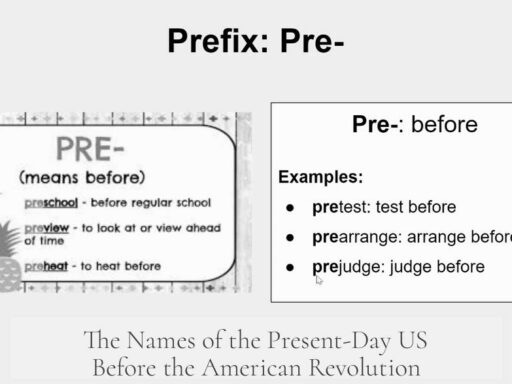Gustave Eiffel’s private apartment atop the Eiffel Tower was allowed through the terms of a 20-year license that granted him and his company control over the tower’s use and profits from 1890. This license enabled Eiffel to create a personal space on the third level for work, reception, and scientific observation. However, his access was not unrestricted for life; it was bound by the duration of this license and later limited by changes in the tower’s function and ownership.
When designing the Eiffel Tower for the 1889 Exposition Universelle, Gustave Eiffel included a small private apartment at its third level. This apartment was about 40 square meters and served more as an office or reception room than a full-time residence. It contained a kitchen, dining area, bathroom, canapé bed, and even a piano. Eiffel envisioned the space as a place to work, study, relax, and showcase the tower to distinguished visitors.
Access to the apartment was strictly controlled. Eiffel invited only notable guests, emphasizing the apartment’s dual role as a private retreat and a showpiece of his achievement. It was situated above the highest public observation floor and adjacent to laboratories focused on astronomy, meteorology, and physiology. Eiffel often visited after public hours, enjoying solitude once visitors had departed and the elevators were shut off.
The legal basis for Eiffel’s private apartment and his use of the tower stemmed from an operational agreement. The tower was originally a private structure owned by Eiffel, his company, and heirs. He obtained a license starting in 1890, granting him exclusive rights to operate and profit from the tower for 20 years. Under this agreement, the tower was slated to be dismantled after the 20-year period.
| Aspect | Details |
|---|---|
| Ownership | Private, controlled by Eiffel and company until 1979 |
| License Duration | 20 years starting 1890 |
| Post-License Status | Structure to be dismantled (initially) |
| Apartment Use | Office/reception, not permanent residence |
This arrangement motivated Eiffel to build the apartment as a symbolic “highest residence in the world,” demonstrating his pride in the tower and fame. It was a space where he could impress artists, writers, and scientists who had initially criticized the tower’s design. The apartment also reflected his dedication to scientific advancement, as the tower housed scientific studies and instruments.
Despite his license and private rights, Eiffel’s access was not absolute throughout his entire life. After the 20-year license period, the tower was no longer threatened with dismantling because of its emerging role in telecommunications. However, these new functions led to considerable changes. The installation of bulky transmitting equipment gradually took over the space on the third level, ultimately destroying the private apartment by the late 1930s. Only a small room remained afterward.
The private apartment ceased to exist in its original form, ending Eiffel’s or his heirs’ ability to use the space privately. Furthermore, ownership of the tower transferred to the City of Paris by the end of 1979, officially ending any private rights Eiffel’s family might have had. During Eiffel’s lifetime, he enjoyed frequent visits to the apartment, especially in quieter hours, but he did not have an unrestricted right to enter anytime he wished for the rest of his life.
- The private apartment was created under Eiffel’s control, enabled by a 20-year operational license.
- The apartment served functional and symbolic roles rather than permanent residence.
- Access was selective and often limited to after-hours visits with distinguished guests.
- Rights to the tower and apartment were provisional and subject to post-license decisions.
- Telecommunications equipment eventually replaced the apartment.
- Ownership shifted to public hands in 1979, ending private control and rights.
In summary, Gustave Eiffel’s agreement allowed the construction of his private apartment as part of the tower’s privately licensed operation. It was a thoughtful blend of personal space, scientific engagement, and representation of success. However, his lifelong private access was not guaranteed. The terms of his license, technological advances, and eventual public ownership limited his and his heirs’ rights. The apartment’s existence and use illustrate both the vision Eiffel had for the tower and the practical constraints imposed by legal and technological developments.
The Tale of Gustave Eiffel’s Secret Penthouse atop the Eiffel Tower
At the top of the Eiffel Tower, on the third level, Gustave Eiffel built a private apartment under a 20-year license agreement, granting him exclusive use and control of the space during that period—but he did not have unlimited lifetime access to it. It’s a story blending ambition, engineering flair, and a dash of personal pride.
So, how did Eiffel get to install his private sanctuary up there, and was it truly his forever perch? Let’s unravel the historical layers.
A Tower, an Apartment, and a Man’s Vision
When Gustave Eiffel designed the “Tour en fer de trois cents mètres” (or simply, the Eiffel Tower), his plan was ambitious—literally and figuratively. Amid the iron lattice rising to nearly 1,000 feet (300 meters), Eiffel carved out a modest 40-square-meter space on the third floor. Was it a glamorous apartment? Not exactly. Think of it more as a refined office or private reception room.
This was no shoebox with bare necessities. The space featured a kitchen, dining area, bathroom, canapé bed, and even a piano. But the apartment was never intended as a full-time home. Eiffel already had plenty of residences across France. Instead, he designed this spot for work, study, relaxation, and importantly, to impress select distinguished guests. A sort of VIP lounge with a killer view!
Why Did This Private Space Exist?
Eiffel had fame and wealth, yet he craved one thing: the highest residence in the world. By installing this apartment, he claimed not just a piece of space, but a realm of symbolic prestige. It was a concrete manifestation of his engineering genius, and a stage for convivial receptions with thinkers, artists, and critics alike—many of whom initially scorned the tower but later admired it.
It wasn’t all show, though. The tower hosted suites of laboratories dedicated to astronomy, meteorology, and physiology. Eiffel used his private apartment to oversee scientific studies and technological advances, blending leisure with intellectual curiosity.
The Agreement That Made It Possible
Here’s where the legal magic happens. The Eiffel Tower was initially a privately owned structure managed by Gustave Eiffel and his company. Their contract granted them operational and financial control over the tower starting in 1890, for a 20-year period. After that, the plan was to dismantle the structure—yes, dismantle! Paris didn’t intend this iron giant as a permanent fixture, at least initially.
During these twenty years, Eiffel had exclusive rights to the tower, including full access to his private apartment. He could invite select guests and control access with discretion. This license meant he wasn’t just a tenant; he was the boss.
Could Eiffel Visit Whenever He Wanted?
Practically speaking, Eiffel often visited his apartment after public visiting hours. This is important. The elevators stopped running in the evening, so after the last tourists left, Eiffel took the chance to savor solitude and quiet above the frantic city below. He shared the apartment with his children and grandchildren during these times, enjoying peace and a panoramic view few others could rival.
However, his rights were bound by the 20-year operational license. After that, his control—and by extension, access to the apartment—was limited. He couldn’t just pop up there for life like a permanent resident. The license, though generous, was temporary.
What Happened To The Apartment Later?
As the tower’s purpose evolved, the private apartment’s fate changed dramatically. With the rise of telecommunications, the tower transformed into a giant transmission antenna. Large and clunky broadcasting equipment began consuming the once cozy space.
By the late 1930s, Eiffel’s private apartment was reduced to a small room, its charm and spaciousness sacrificed to technology’s advance. The idea of living or working there faded into history. Moreover, ownership of the tower transferred to the City of Paris only in 1979, ending private rights held by Eiffel’s heirs.
What Can We Learn From This?
The story of Gustave Eiffel’s private apartment teaches us a few things:
- Vision and engineering can blend with personal ambition, resulting in unique creations.
- Ownership and operational agreements shape how creators enjoy their works.
- Public and technological needs can outgrow personal spaces, even those built by pioneers.
For those fascinated by the Eiffel Tower, it’s intriguing to imagine this secret aerie where Eiffel entertained luminaries and contemplated scientific wonders. But the rules of the 20-year license remind us that even a genius like Eiffel played by the legal and societal norms of his time.
Want to experience the spirit of that private apartment today?
While Eiffel’s actual 40-square-meter space no longer exists in its original form, Paris visitors can still ascend to the third-level observation deck. Though no private chairs or pianos await, standing there feels like catching a glimpse of the inventor’s dream—balanced between grandeur, function, and passion.
To Wrap It Up
Gustave Eiffel built his private apartment atop the tower under a 20-year license for operating the tower from 1890, which allowed him exclusive access during that time. The apartment existed primarily as a workspace and reception room, intended more for impressing visitors and personal solace than as a full-time home.
His access was limited by the terms of his agreement. He wasn’t free forever to ascend the tower anytime he wished. Later, technological upgrades consumed his private quarters, and when the City of Paris assumed ownership, private use ended.
So next time you gaze up at the Eiffel Tower, remember it’s not just a marvel of iron and design. It’s also home to a fascinating tale of ambition, legal quirks, science, and a secret little apartment where Gustave Eiffel once touched the sky.

